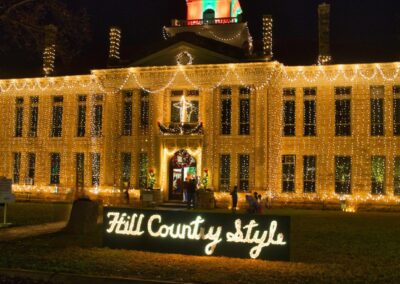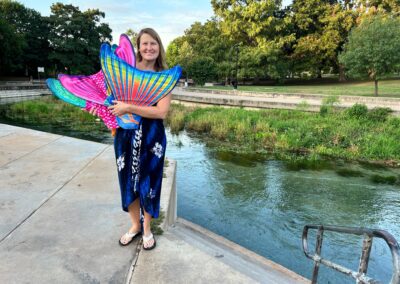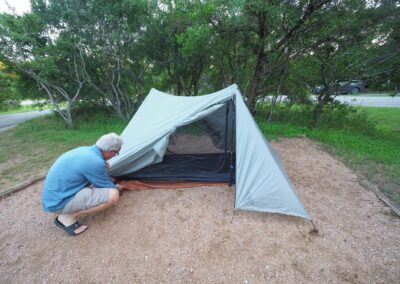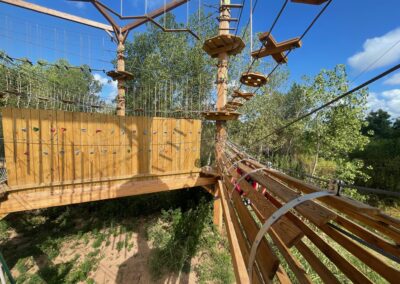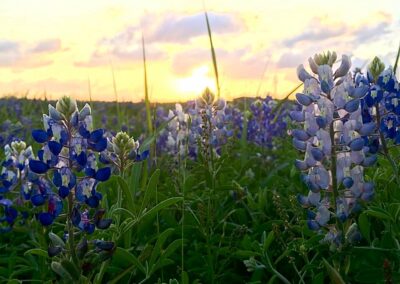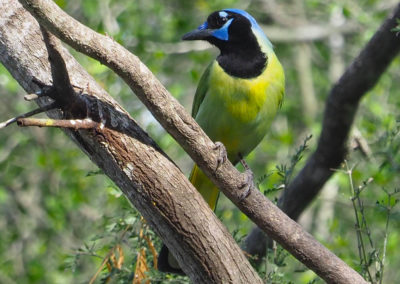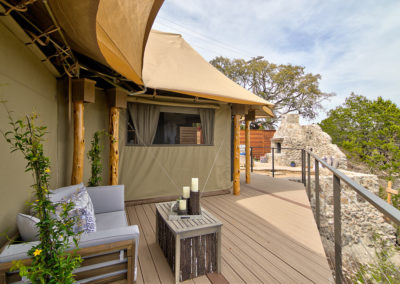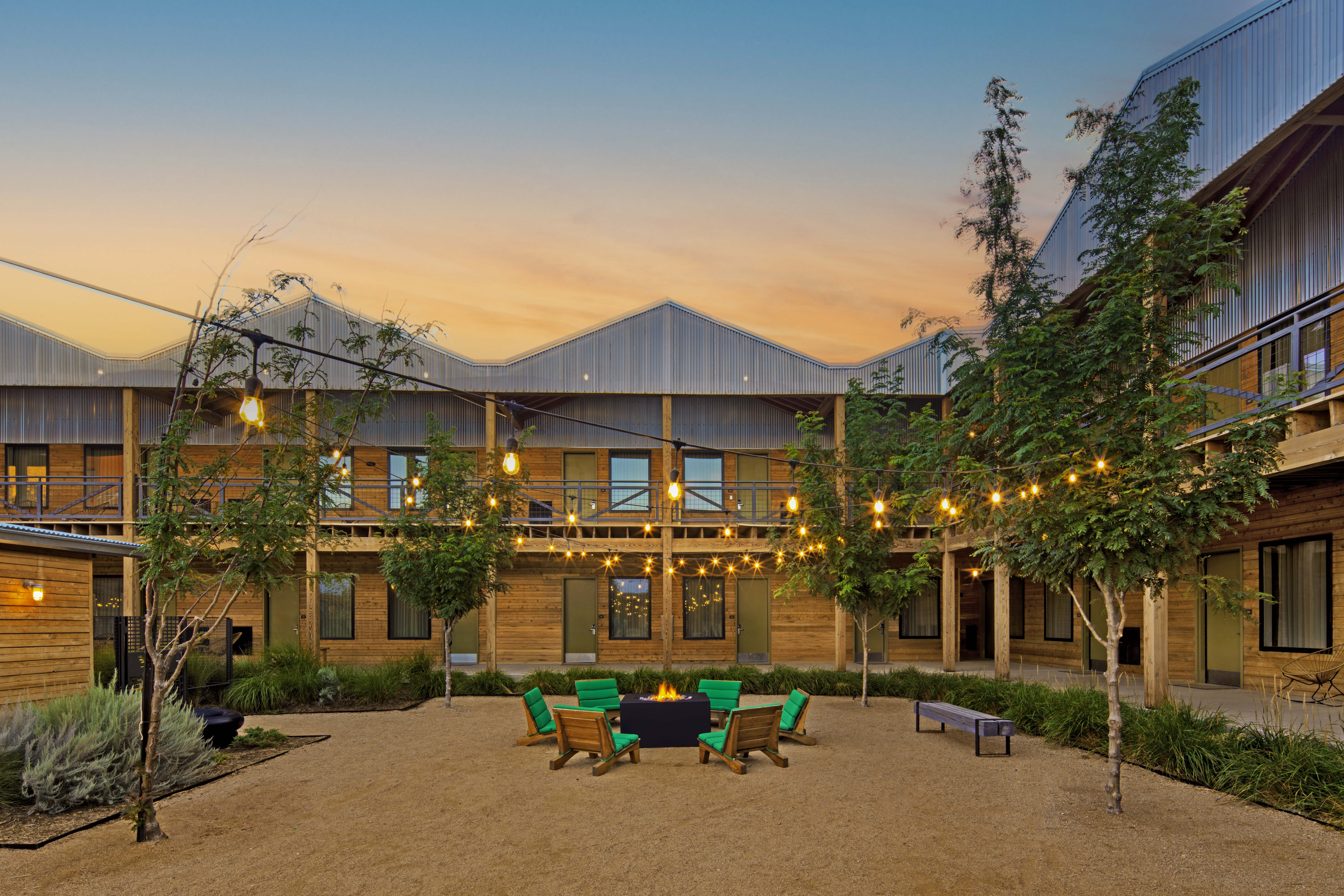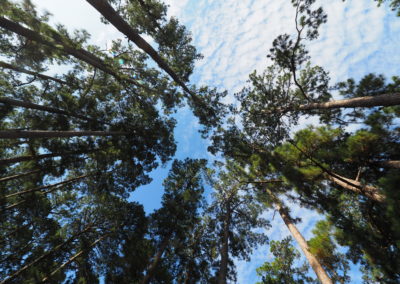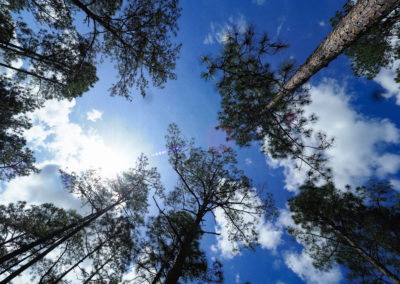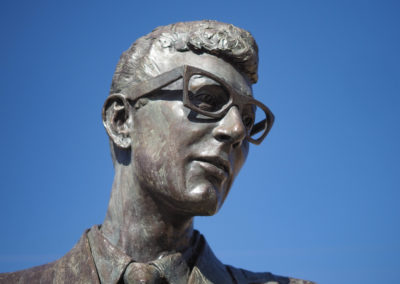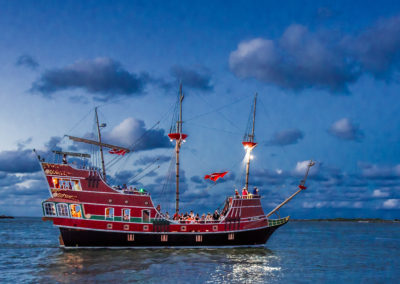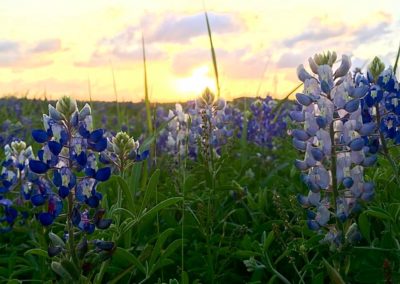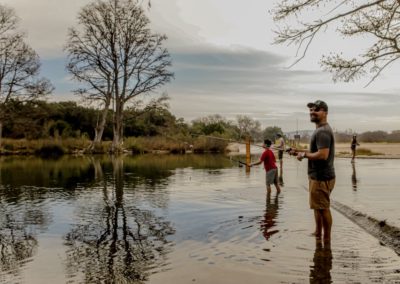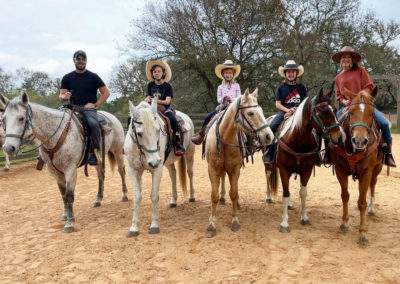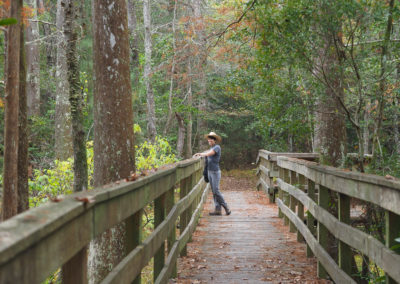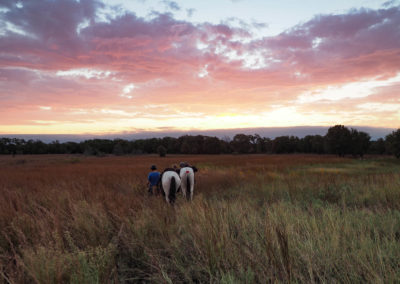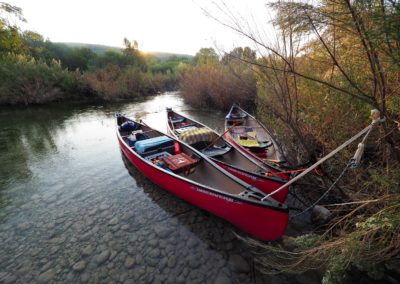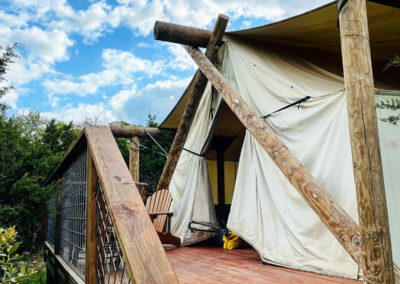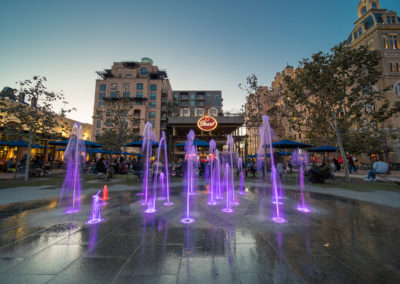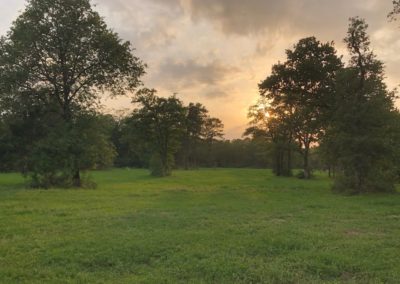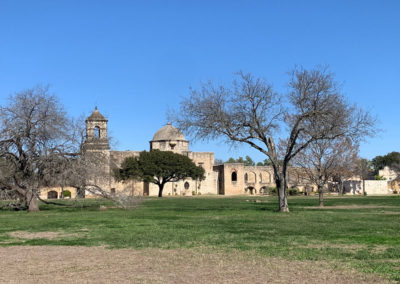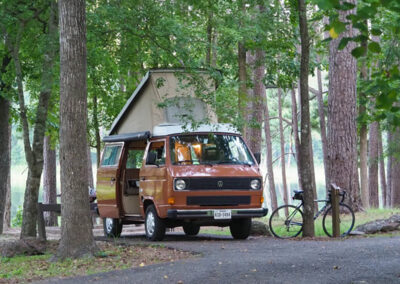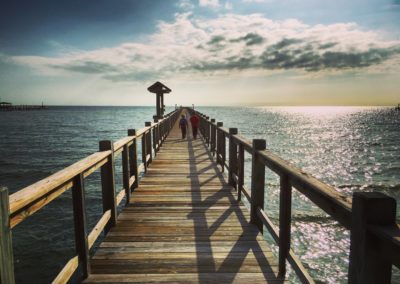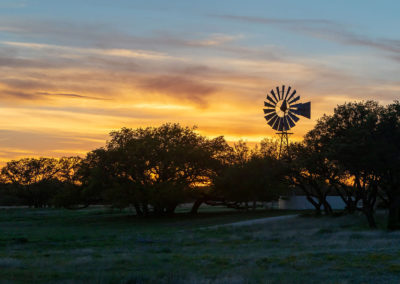Buckle up –– the bluebonnets are back, and experts are predicting a banner season for the beloved state flower.
“On a scale from one to 10, this year looks like it could be an eight, for bluebonnets in particular, if not even better,” says Andrea DeLong-Amaya, Director of Horticulture for the Lady Bird Johnson Wildflower Center. “This fall and winter we’ve enjoyed adequate rainfall that’s been well-spaced, which is really key to wildflower development.”
Experts at the Wildflower Center also credit last summer’s drought to this season’s spectacular spring showing.
“Last summer’s drought likely helped this spring’s wildflower display,” said Matt O’Toole, Director of Land Management for the Wildflower Center. “When we have extreme weather the prior summer, we see some plant mortality, which reduces competition in the soil and creates space for spring blooming wildflowers.”
But this year’s recent warmer-than-average weather coaxed the bluebonnets out a bit earlier than usual this year –– and with cold weather past us, DeLong-Amaya predicts the wildflowers will keep trucking along throughout spring.
“While it’s been on the dry side, especially for Austin, if we get some good rain in the next few weeks, the wildflowers should really explode,” she says.

Bluebonnets at Lady Bird Johnson Wildflower Center, where experts predict a big spring showing this year. Credit Wildflower Center
But bluebonnets aren’t the only wildflowers making their annual debut ahead of the first official day of spring (March 19). In late February, as bluebonnets began painting roadsides in brilliant bursts of blue, a slew of spring wildflowers started contributing pops of red, yellow, pink and purple to the colorful canvas. Fragrant flowering trees such as Texas Mountain Laurel, Redbuds and Mexican Plums are also perfuming the air with spring’s signature scents.
With wildflower season on the brink of bursting into full bloom, now is the time to plan out your floral-fringed road trip.
“The peak for Central Texas this year will be the end of March, or early April,” says DeLong-Amaya. “But adjust for that depending on where you are in the state.”
And remember: the best places for wildflower watching aren’t from the car.
“There’s a lot of stuff that’s easy to see from the roadside, but if you can go to a place and get outside and see things on foot, whether that’s at the Wildflower Center or a park, it’s a whole lot more fun and you can appreciate the plants up close and see things you might miss going 60 miles per hour down the highway,” says DeLong-Amaya.
Here are a dozen of Austin Travels’ top recommendations for soaking in spring blooms in Central Texas this year.
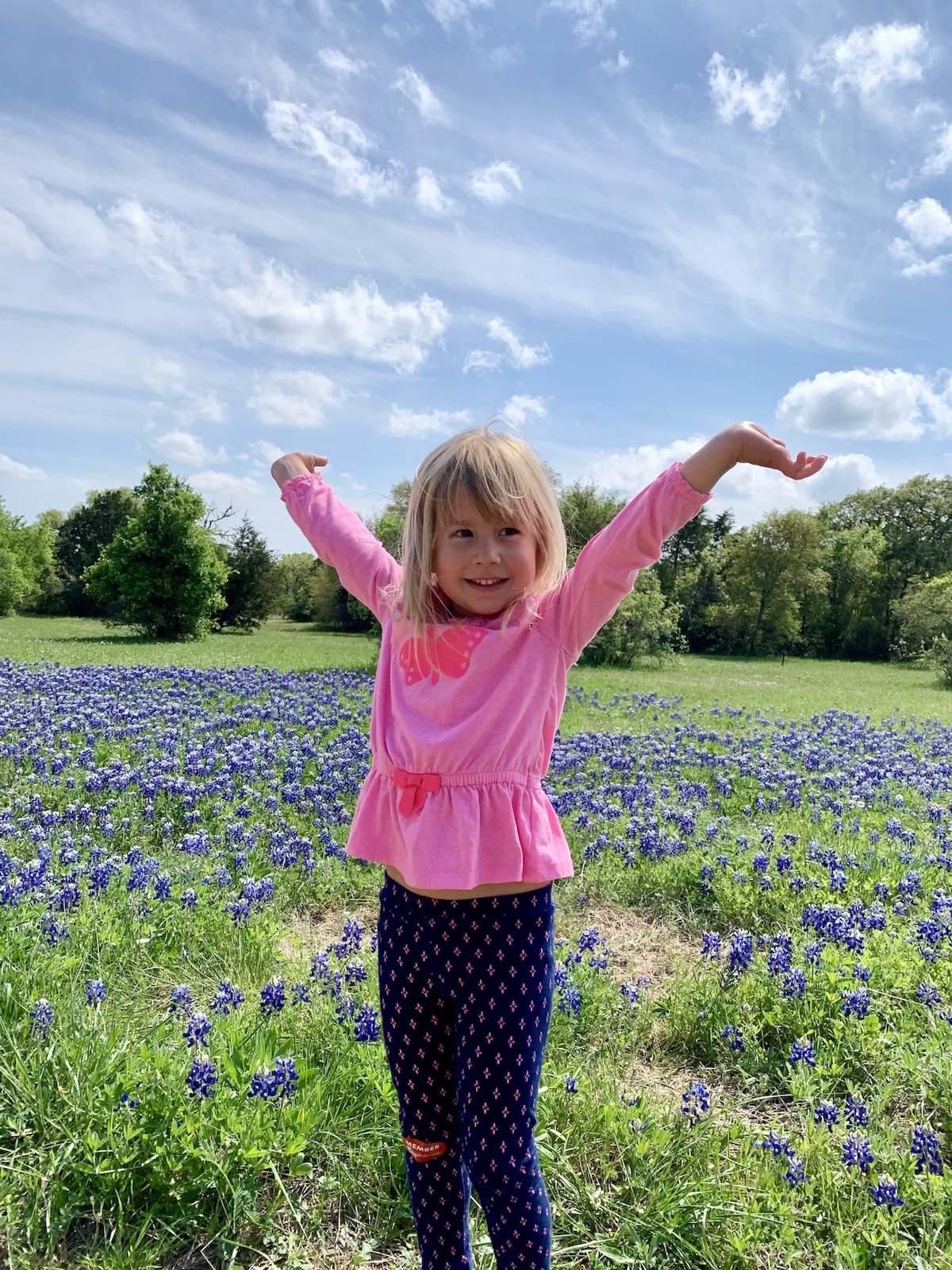
Lady Bird Johnson Wildflower Center offers a safe spot for capturing photos with bluebonnets and wildflowers. By Mauri Elbel
1. Lady Bird Johnson Wildflower Center
Lady Bird Johnson Wildflower Center, home to nearly 900 species of native Texas plants including hundreds of species of native wildflowers, is one of the best bets for soaking in spring’s blooms in Austin. In addition to highly anticipated showstoppers like Texas bluebonnets, Indian paintbrush and pink evening primrose, the Wildflower Center has a diverse array of blooms on display.
Be on the lookout for species typically found on the sidelines –– Texas star (Lindheimera texana) and golden-eye phlox (Phlox roemeriana) are already growing and popping up at the Wildflower Center, and perennials like golden groundsell (Packera obovata) and large buttercup (Ranunculus macranthus) have begun blooming, too. This year, keep an eye out for the rock rose (Pavonia lasiopetala) –– the Wildflower Center’s horticulture experts have designated it as “Wildflower of the Year for 2024.”
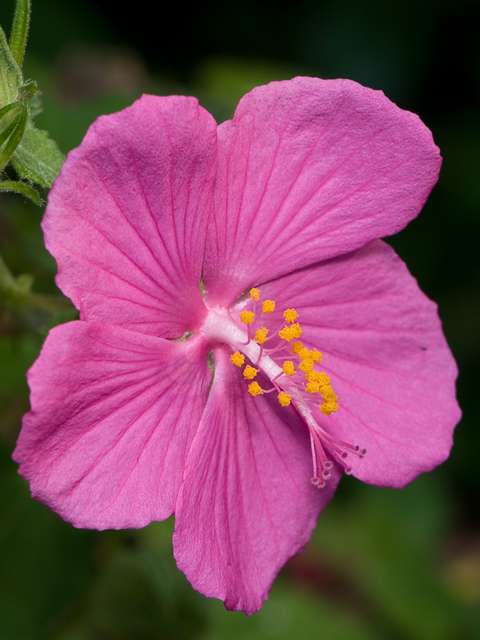
Experts chose the rock rose as Wildflower of the Year 2024 because of its long blooming season, adaptability to various light conditions, robust heat tolerance, and the fact that it is widely available and easy to grow. Credit Wildflower Center
Find wildflower facts, recommended drives and real-time reports of which wildflowers are in bloom at Texas Wildflower Center, and participate in this year’s wildflower watch on Instagram @texaswildflowerwatch by tagging your photos #TXWildflowers2024.
2. Texas State Parks
Visiting one of the many blooming Texas State Parks offers another safe option for finding those photo-worthy wildflower backdrops. Nearby state parks consistently teeming with wildflowers include Pedernales Falls State Park, Lyndon B. Johnson State Park and Historic Site and McKinney Falls State Park, among others. Because spring tends to be a popular time to visit, make day pass reservations before you go. More at https://tpwd.texas.gov/state-parks/.
RELATED: 8 great state parks for camping with kids

Pose your pups in the bluebonnets at a local Austin park. Photo by Mauri Elbel
3. Austin Parks and Preserves
Austin’s parks and nature preserves offer some of the best places around town to get up-close views of bluebonnets and wildflowers –– and there’s no better time to get outside than spring, when summer’s blazing temperatures are still weeks away. Pick from the plethora of preserves that are part of the Austin Parks system to capture your wildflower photos, or set your sights on parks boasting wide open fields such as Commons Ford Ranch Metropolitan Park, Bull Creek District Park or Emma Long Metropolitan Park. More at https://www.austintexas.gov/department/parks-and-recreation.

St. Edwards University consistently teems with bluebonnets each spring. Photo by Travis Albrecht
4. St. Edward’s University
Another close to home option? Pretty patches of blue grace the gorgeous 160-acre campus of St. Edward’s University, just south of downtown, each and every spring. Big, beautiful swaths of bluebonnets are sprinkled throughout the picturesque campus and along St. Edward’s South Congress frontage.
5. Muleshoe Bend Recreation Area
Lower Colorado River Authority’s Muleshoe Bend Recreation Area, tucked into a bend of the Colorado River less than an hour northwest of Austin, is known for its bountiful bluebonnets this time of year. Time your bluebonnet gazing with the first annual BLUEM 2024 on Saturday, March 23, from 10 a.m. to 6 p.m. –– this family-friendly event promises games, outdoor recreation including rock climbing, UTV rides and mountain biking, and of course, lots of flowers.

Head to Washington County to see the bluebonnets. Credit Natalie Lacy Lange
6. Bluebonnet Country
If you want to get out of town –– and maybe stop for some Blue Bell between bluebonnet sightings –– make a beeline to Washington County’s Bluebonnet Trail. This time of year, splashes of springtime paint the 80 miles of rolling farm roads winding through Brenham, Burton, Independence, Washington, and Chappell Hill. For updates on wildflower season in Brenham and Washington County, known as “Bluebonnet Country,” check out Visit Brenham’s Wildflower Watch website where you can find driving maps and suggestions for finding the showiest spots.
RELATED: Heading to Brenham? You’re in for a treat
7. Willow City Loop
Take a floral-fringed drive along Willow City Loop, a 13-mile scenic drive boasting meadows and valleys blanketed in bluebonnets, Indian paintbrush, firewheels and poppies. Pro-tip: Plan your drive during the weekdays to avoid weekend crowds.
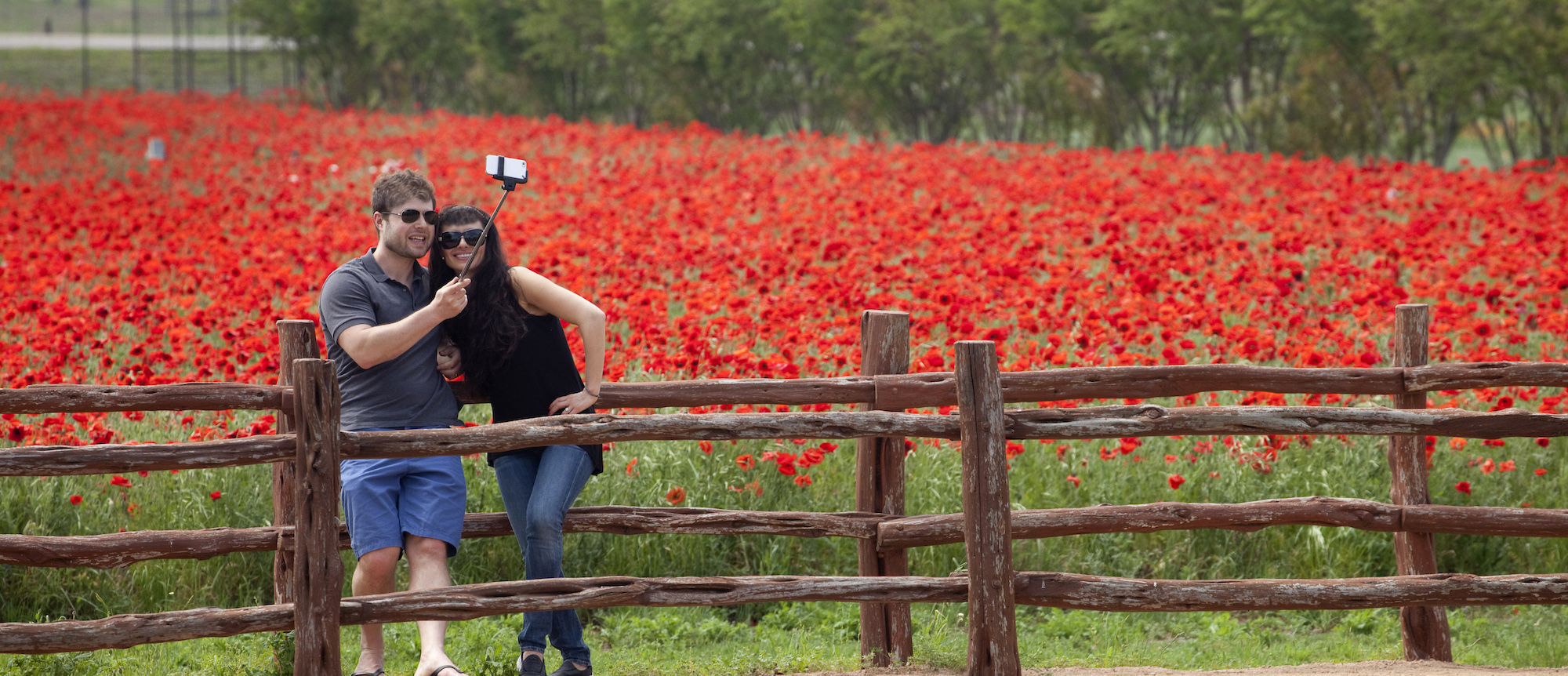
Posing with the poppies at Wildseed Farms. Credit Visit Fredericksburg
8. Fredericksburg
Make your first flower stop in Fredericksburg at Wildseed Farms –– the nation’s largest working wildflower farm brimming with hundreds of acres of flowering fields just outside of Fredericksburg. This spring, expect to see bluebonnets in addition to wildflower fields bursting with showstopping red poppies, coreopsis and Indian blankets. Stick around the Hill Country to cruise along the winding roads meandering through Fredericksburg, Johnson City, Mason and Llano where you will find the most time-tested Texas Hill Country wildflower trails cloaked in bluebonnets, pink evening primroses, daisies, Indian paintbrush, vibrant winecups and more.
9. Burnet
Burnet, officially designated as the “Bluebonnet Capital of Texas” by the Texas State Legislature in 1981, is widely considered one of the best towns in Texas for viewing wildflowers. Known as a bluebonnet hotspot thanks to its surrounding roadsides and pastures covered in blue during the spring season. Time your trip with Burnet’s 41st Annual Bluebonnet Festival taking place this year on April 12-14.

Marble Falls is a marvelous spot for soaking in the spring bluebonnets. Credit Visit Marble Falls
10. Marble Falls
Known as the epicenter of wildflower country, you’ll find a colorful landscape peppered with everything from bluebonnets and winecups to yuccas and paintbrushes in this wildflower prone area just an hour northwest of Austin. View and download a Wildflower Scenic Route Map to make your way through wildflower country at www.visitmarblefalls.org/wildflowers and embark on the floral journey of your choice, all starting in Marble Falls –– the Bluebonnet Trail (35 miles), Texas Paintbrush Trail (50 miles), Prairie Verbena Trail (50 miles), Winecup Trail (55 miles) and Yellow Coneflower Trail (80 miles).
11. Bastrop
Become beguiled by blooms on the way to Bastrop, where vivid displays of bluebonnets have already engulfed both sides of Highway 71 in big swaths of blue. Before reaching Bastrop, stop off at McKinney Roughs Nature Park, where you can expect the trails weaving through this LCRA Park to burst with wildflowers throughout spring.

Indian paintbrush and bluebonnets at sunset in Washington County. Credit Natalie Lacy Lange
12. Lone Star State
During springtime, much of Texas’ nearly 270,000 square miles of landscape is decorated with wildflowers. If you’re looking for a comprehensive guide to wildflower drives across the Lone Star State, explore wildflower routes found in each region of this vast state, from the Panhandle and Northeast Texas to the Hill Country and Southwest Texas, at https://www.wildflower.org/magazine/landscapes/wildflower-drives.
If You Go

Fun Flower Facts:
- There are six species of bluebonnets in Texas.
- The Texas bluebonnet became the Texas state flower in 1901, and all Lupinus species were designated as the official state flower 70 years later.
- Bluebonnets typically bloom from early March to early May.
- The Indian paintbrush is actually a pretty parasite that will attach themselves and draw nutrients from other plant species such as the bluebonnet.
- You can eat some wildflowers, like pink evening primrose (often called buttercups).
- It’s not illegal to pick bluebonnets. While there are laws against trespassing and damaging property, bluebonnets don’t have any special protection compared to other flowers or plants.
- Antelope horns, from the milkweed family, are a host plant for the monarch butterfly.
- Texas parsley, which can grow up to 5 feet high, is the host plant for the black swallowtail butterfly.
- Bluebonnets are selfish and prefer disturbed, poor-quality soil. They don’t like competition and they thrive in landscapes that have been heavily grazed by cattle or have been scorched by fire.
- Up close, the flower looks like a little bonnet; after it rains, look for a drop of water in each bowl-like leaf.
- Bluebonnets are part of the legume family.
- Common early-spring bloomers in Texas include bluebonnet, pink evening primrose, Indian paintbrush, winecup and coreopsis while common late-spring bloomers include Indian blanket, black-eyed Susan, lantana, Turk’s cap and horsemint.

















